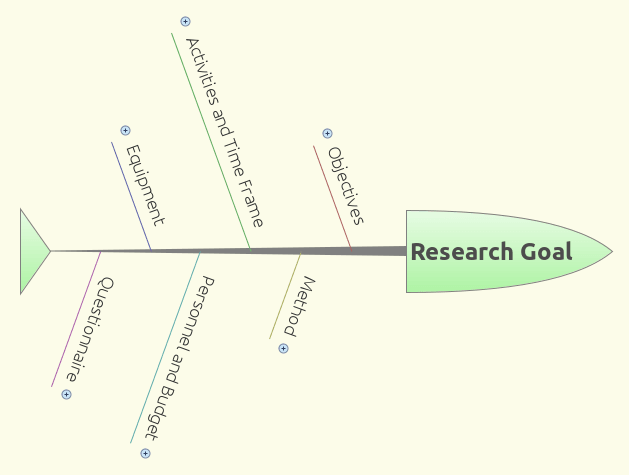Why is there a need to have a clear-cut research goal in designing a study? Why is a goal important and how can it influence the research process? This article provides answers to these questions.
Have you found a research topic worthy of investigation? What studies have been done so far about it? What questions have not been answered by those studies?
These are just some of the basic questions you will have to ask yourself while contemplating and narrowing down your research topic. It is a must that the issue or concern is clear enough in your head such that you can figure out specific questions for your own study.
Ultimately, you need to ask yourself the question:
“What is the goal of my research?”
The Importance of the Research Goal in Designing a Study
You will face a very tedious task of doing a lot of unnecessary things, or find that your research results are unusable unless the research goal is well-defined. All efforts boil down to a particular purpose, i.e., towards fulfilling a desired effect. A clear picture of your research goal will help you steer your research work towards satisfactory completion.
A research goal focuses on the long-term outcomes of the research study.
Once the research goal is clear enough for the researcher to proceed, the rest of the things you need to do will fall into place. Having a clear goal in mind, you can work backwards in designing a study with greater confidence.
For example, a research goal based on an issue or concern would be something like this:
Issue or Concern
Students in today’s generation get addicted to the internet, particularly the social media, that negatively impact on their academic performance because of increased bouts of depression. Real-life interactions with their peers and acquaintances suffer as they become self-centered and unmindful of others. As a result, many of the college graduates are oblivious to the need to work in a team in their jobs where social interactions are necessary to achieve the organization’s goals and objectives.
Research Goal
Demonstrate that the government’s five-year intervention program to address internet addition among students has a positive impact on student beneficiaries via a randomized control trial (RCT).
How the Research Goal Relates to the Research Process
The following fish bone diagram created using X-Mind, a mind mapping software, shows how the research goal relates to the other components of the research process.

1. Specific objectives under the research goal
The above diagram shows that to arrive at your research goal, you should list down a set of specific research objectives to fully realize it. You also need to write specific research questions to reach that goal.
What I mean by specific is that the research objectives should follow the elements of a SMART objective: S-specific, M-measurable, A-attainable or achievable, R-realistic, and T-timely.
Specific means you have written the research objective clear enough for everyone to understand.
Measurable means you need to have criteria to measure your progress in doing research. Sometimes, we call this thing simply as a performance measure.
Attainable, as the word connotes, tells you that you should not have more than you can chew. Write your specific objective in a way that you can achieve, perhaps with little hitches, whatever you planned to do. Can you do it with the limited resources that you have? Or, do you have the capability to do so? If your answer is yes, then by all means, go ahead.
Realistic is closely related to achieving your research objectives. Are you not dreaming of achieving the impossible or next to impossible? Bring your research objective a little down there if you do not have enough resources or enough time to carry it out.
Timely or time-bound means you target a specific date to finish whatever you have started. Setting a deadline gives you the urgency to finish your research project. As Parkinson’s Law says it: “Work expands to fill the time allotted for its completion..”
Work expands to fill the time allotted for its completion.
Parkinson’s law
2. Research methods to use
Second, to fulfill the research objectives, appropriate research methods should be employed. There should be a one-to-one correspondence between objectives and method. For objective 1, method one will have to be employed; for objective 2, method two will be employed; for objective 3, method three will be employed, and so on, and so forth.
In coming up with the method, you may ask yourself the following questions:
- What should I do to reach objective one (two, three, …)?
- What things do I need to meet objective one (two, three, …)?
3. Specific activities to undertake
Third, designing the method entails defining the specific activities to be done and the time-frame to perform those activities.
For example, a focus group discussion will require the participation of different sectors in the village. Sectors such as the youth, women, religious organizations, non-government organizations, LGBT++, senior citizens, and whoever will be found relevant by the researchers.
Thus, this will need coordination with the local leaders, identifying the participants of the discussion, looking for a conducive place to hold a meeting, preparing refreshments, and so on.
How long will all these preparations take? A GANTT chart will be helpful to achieve this end.
The following questions will prove handy in preparing your GANTT chart:
- Will your study require travel? Who will travel and how frequent will this be?
- Do you need to conduct meetings? Who will be involved in the meetings?
- Will you be getting the response of a significant number of people in the study area?
- How long will each of the activities take?
4. Persons responsible for implementing the study
Fourth, you will need to identify those people who will help you do those activities. Applying the power of delegation is a must, so you will finish your research project within a reasonable time.
You cannot do all the interviewing yourself, especially if your random sampling estimate for the population requires at least 200 respondents. Just supervise and check all your enumerators if they did the administration or interview as expected of them.
Also, you will need to find out how much all your transactions will cost.
5. Equipment or materials to include
Finally, identify the specific equipment or materials required to carry out your field work. Do you need a camera, recorder, measuring scale, LED projector, among others.
It might tempt you to request a lot of things for your research project, especially if you have a generous funding source. But it’s good practice to purchase only those which you must really use. Your sponsoring funding agency will truly appreciate your management of scarce resources.
© 2014 April 24 P. A. Regoniel | Updated 26 February 2023



